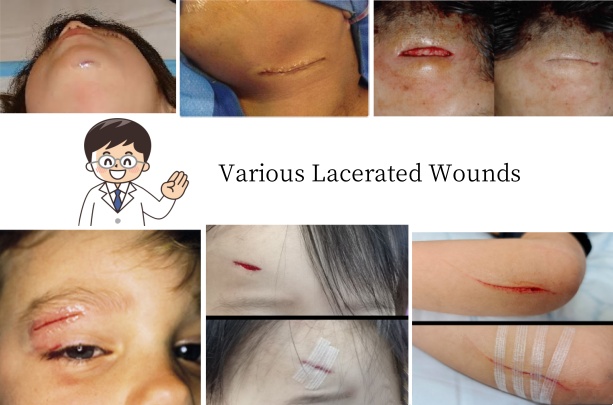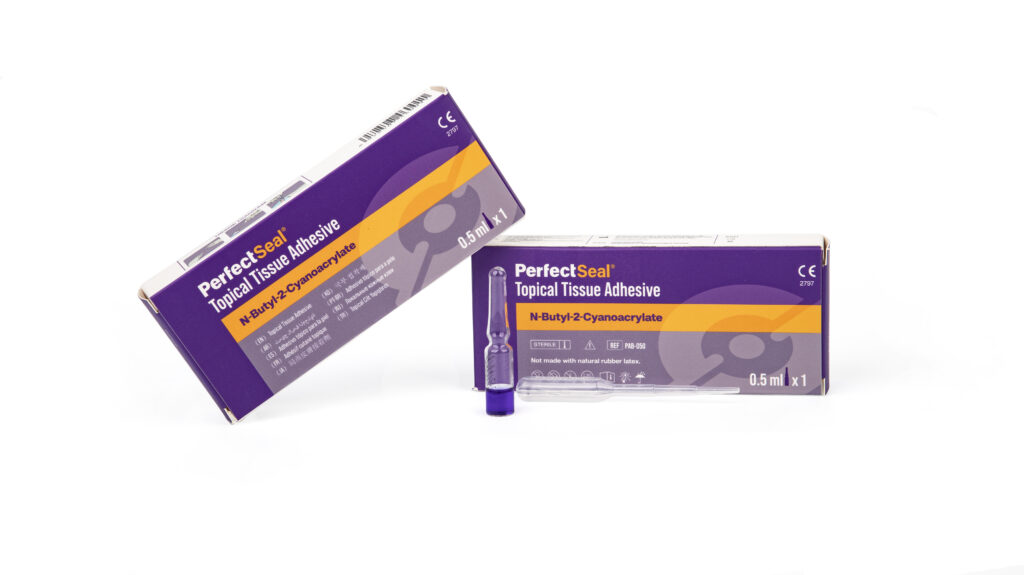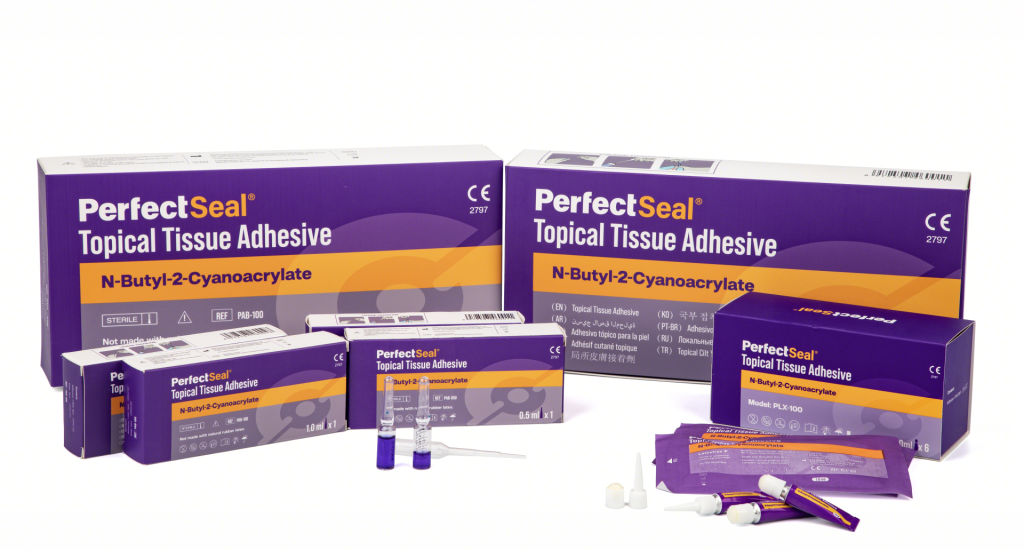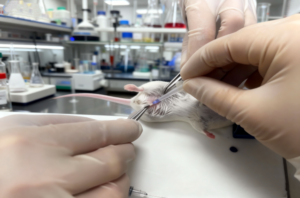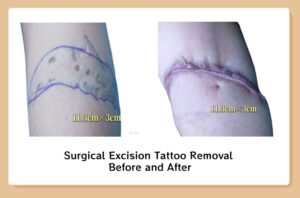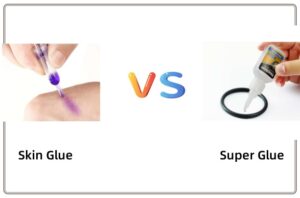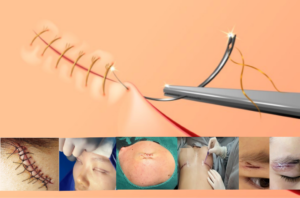What is a Lacerated Wound?
A lacerated wound is a tear or cut in the skin, tissue, or muscle. Imagine accidentally hitting your palm against a sharp object like a broken glass or metal edge.
A laceration may result. These wounds can be superficial, affecting only the epidermis, or deep, affecting muscle or bone.
Any body part can lacerate. One can appear on your face, fingers, or legs. They can be small and barely bleed or large and cause significant bleeding.
Types and Characteristics of Lacerated Wounds
Depth, location, and cause all affect how severely lacerations cut. Knowing these variations helps one select the correct action for accelerated recovery.
1: By Depth
Superficial Lacerations
- Just influence the top layers of the skin.
- For instance: paper cuts or minor scrapes from falls.
- Low infection risk and minimal bleeding define these traits.
2. Deep Cuts
- Reach into muscular, tendon, or fatty tissue.
- For instance, knife wounds or glass breakage injuries.
- Features: possible damage to blood vessels or nerves, heavy bleeding.
3. Complex Lacerations
- Involve contaminated or crushed tissue—that is, from car accidents.
- Features: sharp edges and strong infection risk.
Through Body Location
- Facial Lacerations—cuts to the brow, chin, or lip.
- Scalp Lacerations: Usually bleed heavily but heal fast.
- Hand/Foot Lacerations: Regular use increases the risk of infection.
- Leg/arm lacerations: longer healing times
Laceration Repair Guide: Step-by-Step
Correct closure methods and wound care help to speed healing and minimize scarring. Here is a basic guide on laceration treatment depending on body location.
Preparation
Use these guidelines before closing a wound:
- To clean the wound, gently rinse with saline or cool tap water to get dirt and trash out.
- Press a fresh cloth or gauze over a wound for five to ten minutes to stop bleeding. Improve the injured area—that is, raise an arm above the heart.
- If necessary, numb the area using a topical anesthetic spray or cream to help with pain. If you use medical skin adhesives—tissue glue—skip this step.
- To keep the wound clean, clip (do not shave) hair all around it.
- Misapplying surgical glue? Compare Correct vs. Incorrect Use of Surgical Glue for optimal healing
Closure Techniques by Body Part
Face, Brow, Chin—Facial Lacerations
- Minimizing scarring in visible areas comes first. Scarless Closure Techniques.
- For minor, straight cuts (<5 inches), bond edges without stitches using wound glues. Master surgical glue techniques with our step-by-step guide.
- Two deep cuts close to the eye or lip could call for fine sutures (6–0 size), or the dermis is sutured with suture, and the epidermis is glued with wound glue adhesive.
- For facial wounds requiring delicate care, our advanced liquid bandage offers a scarless closure solution.
- Why Wound Skin Adhesives Matter: Less scarring than sutures—pain-free, waterproof, without needle marks.
PerfectSeal liquid skin glue for arm wounds before and after
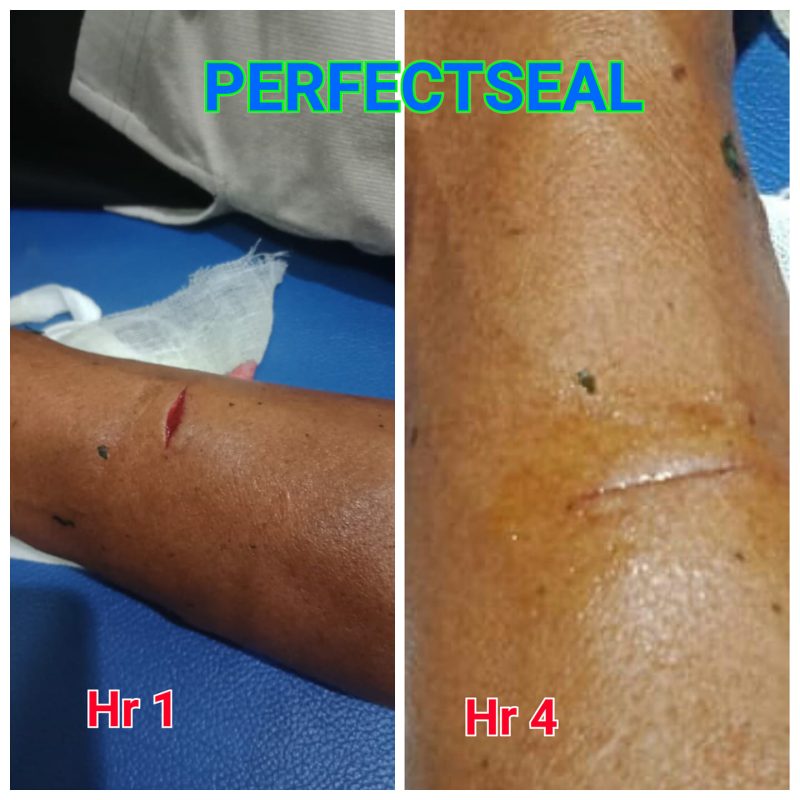
Palm and fingertip lacerations—hand and finger
- Priority: restore ability and stop infection.
- Steps: Tendons or muscles in deep wounds, such as palm laceration repairs, need sutures.
- If edges line up nicely, surgery incision glue can close superficial cuts, such as finger lacerations.
Head Wounds and Scalp Laceration Treatment
- Priority: Stop bleeding fast.
- Steps: Using staples or the hair apposition technique (twist hair strands over the wound + apply wound glue) for active bleeding
- Liquid wound glues close a shallow cut without shaving hair.
- Healing Time: Scalp wounds heal quickly; wound skin adhesives drop off on their own in 7–10 days.
PerfectSeal Topical Tissue Glue for Scalp Before and After

Closure Method Comparison
Body Area | Sutures | Staples | Wound Glues |
Face | Moderate scarring | Not recommended | Best: Waterproof, No needles, low scarring |
Hands/Fingers | Needed for deep cuts | Rarely used | Good for minor cuts |
Scalp | Requires shaving | Quick, secure | Fast + preserves hair |
For the closure of deep tissue, wound glues and sutures can be used to repair the wound, deep tissue sutures, and surface tissue glue. Caesarean section incision treatment method
Choosing the Right Closure Method
Lacerations vary in size, location, and severity, so the best closure method depends on the wound’s severity. Stitches or staples work for deep wounds, but medical surgery adhesives heal minor cuts faster and painlessly. Explore the options.
Traditional Lacerated Wound Treatment Methods
Used for deep wounds, such as hand laceration repair, and high-tension areas (e.g., joints).
How: Needle and thread sew skin layers.
Complications: pain, removal, scarring.
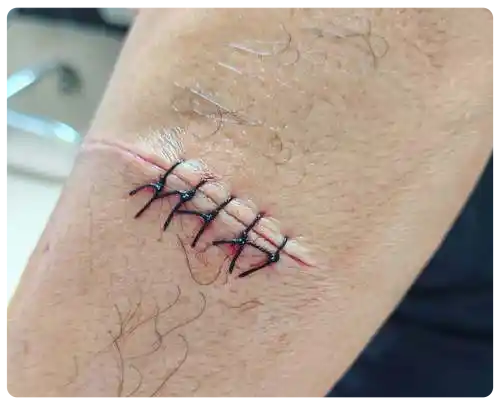
Staples:
It is used for scalp laceration repair or thick skin (back, legs).
We provide fast wound closure with metal clips.
It is not MRI-safe and may leave marks.
Steri-Strips or skin-closure tapes are used for minor, clean cuts such as minor arm lacerations.
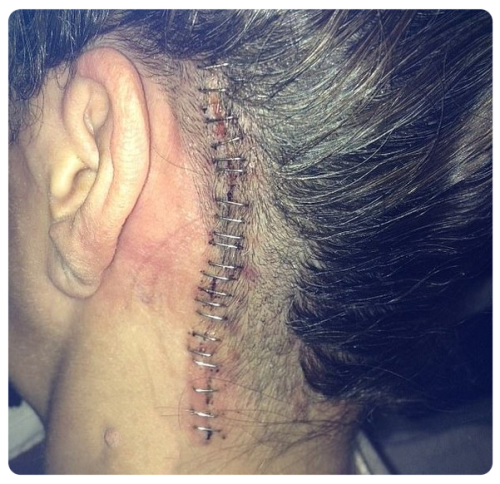
Adhesive strips hold edges together.
Poor hold; falls off when wet.
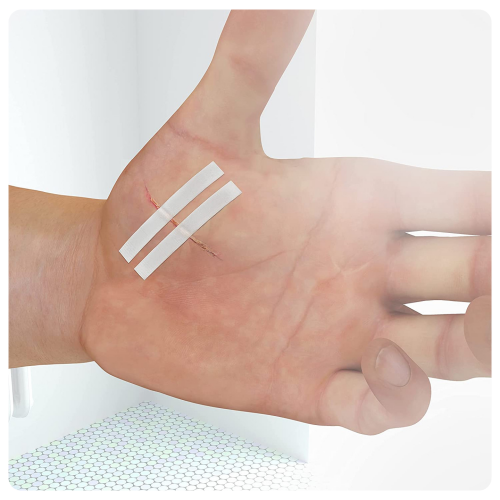
Zipper closure:
Use: Dirty/infected wounds requiring delayed stitching.
How: Temporary zippers hold edges.
Cons: Rarely used; requires follow-up.
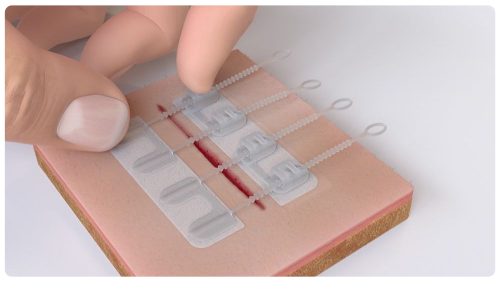
Advanced Incision Glue Solutions for Laceration
Wound incision glue, like n-butyl cyanoacrylate skin glue, bond skin edges in seconds.
This product is ideal for face, scalp, and small limb wounds.
Benefits: No needles or pain—ideal for children and needle-phobic patients.
The closure process is faster, taking only 2–5 minutes, compared to 15+ minutes for stitches.
Bandage-like wound closure reduces infection risk.
Minimal scarring
Limits: Avoid high-tension areas like palms and joints.
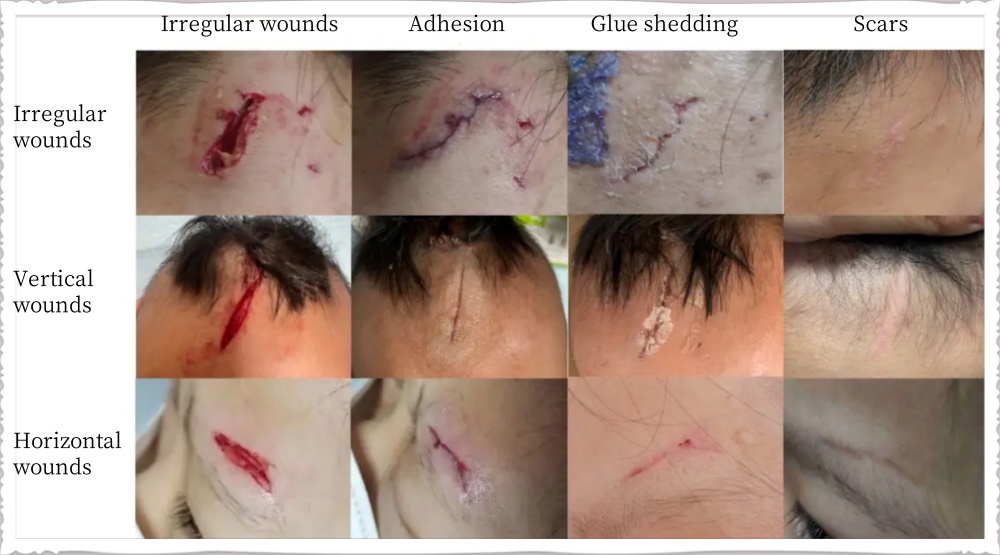
For specialized applications like closing mammoplasty incisions, always consult procedure-specific adhesive protocols.
Closure Method Comparison
Method | Pain | Time | Scar Risk | Best For | Limitations |
Sutures | High | 15–30m | Moderate | Deep hand/face wounds | Scarring; removal needed |
Staples | Mild | 5–10m | Moderate | Scalp, thick skin | MRI interference; marks |
Skin-Closure Tapes | None | 2m | Low | Small, clean cuts | Weak hold; not waterproof |
Zipper | Mild | 10m | High | Infected wounds | Temporary; rare use |
Incision Glue | None | 2–5m | Low | Face, scalp, minor wounds | Avoid high-tension areas |
Why Opt for wound Skin glues for Laceration Healing?
For minor cuts, wound skin adhesives—tissue glues—are starting to replace staples or stitches. For many wounds, these are the reasons they make sense:
One should be pain-free and needle-free.
Needles are not popular! Like a liquid bandage, medical super adhesives bond skin edges in seconds without pulling the skin. For children, the procedure is perfect since it lowers anxiety and fear during wound closure.
- Needle-Phobic Patients: Less stress results from no needles.
- Fine Areas: Ideal for face, scalp, or eyelid cuts where stitches might leave marks.
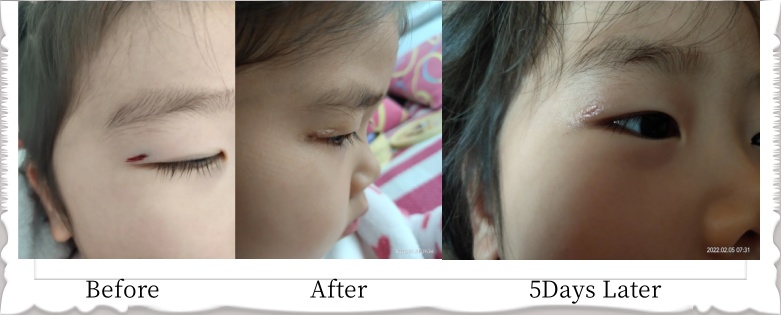
Less scarring and faster healing
Medical skin adhesives produce a protective seal that, according to studies, blocks germs more effectively than bandages or stitches, lowering the infection risk.
- Reduces Scarring: Skilled alignment of skin edges results in less obvious scars.
- Speeds Recovery: Unlike stitches, no follow-up removal is needed.
For a 1-inch laceration on the forehead, for instance,skin glue often heals as cleanly as stitches but without needle marks.
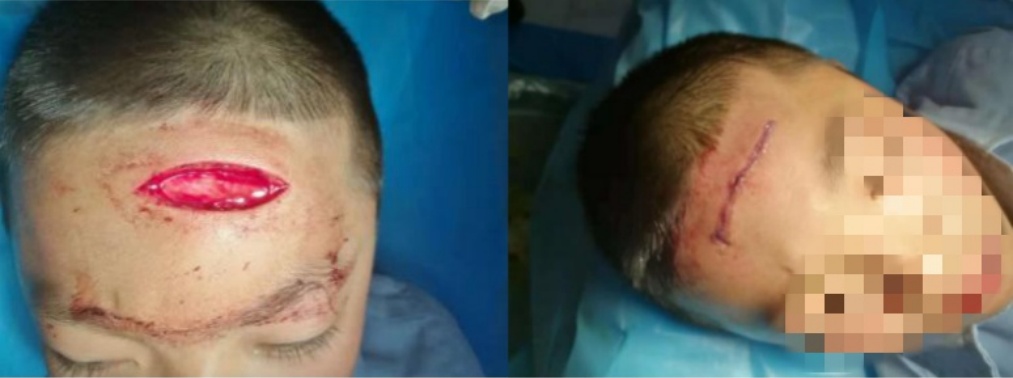
Simple and fast to use.
Applying wound skin adhesives just takes two to five minutes, while stitching calls for fifteen-plus minutes. For emergencies, fast closure for crowded ERs or urgent care is absolutely vital.
Active Lifestyles: Travelers or athletes can go back to events earlier.
Perfect for parts of a specific body.
- Face & Scalp: Glue avoids hair cutting and preserves the look.
- Hands & Fingers: Works for minor cuts (e.g., finger laceration) not over joints.
- Legs & Arms: Perfect for low-tension, low-grade cuts.
Knowledge’s Restraints
While adhesives shine for minor cuts, steer clear of them for:
- High-tension areas: palms or knees, elbows.
- Dirty/infected wounds: first, they need extensive cleaning.
- Deep Cuts: Stitches are required for tendon or muscular injuries.
After-treatment care and complications
Good aftercare guarantees quick healing of your laceration and lessens complications. Follow these guidelines:
- Safeguard the closing.
- Avoid Strain: If the wound is on a joint, such as the elbow or knee, avoid heavy lifting or stretching.
- Adhesives: Steer clear of picking or cleaning the glue; it peels off organically in five to ten days.
- Cover with a bandage to stop staples or stitches from snagging on clothing.
See for complications
- Infections: fever, redness, swelling, pus.
- In a wound reopening, skin edges may either separate or bleed again.
- Allergies: rare itching or rash around adhesives.
Please consult your doctor promptly if any issues arise.
When Should I See a Professional?
While minor cuts heal at home, seek emergency treatment for the following conditions:
After ten minutes of pressure, blood spills across the bandages.
Infection Indices:
- Rising redness, pain, or warm skin around the cut.
- Bad smell or yellow/green discharge.
- Clearly visible fat, muscle, or bone (e.g., deep lacerated wound).
- Cuts contaminated by rust, dirt, or saliva, such as animal bites.
- Nerve or tendon damage is common in finger cuts, leading to numbness or loss of mobility.
- Tetanus Risk: For dirty wounds, no tetanus shot during the past five to ten years.
Pro Tip: See a healthcare provider always in high-risk areas (face, hands) or in doubt about closure techniques (stitches vs. medical skin adhesives).
Lacerated Wounds and Wound Glue FAQ
Q: How long do staples stay in?
A: 7–10 days for scalp; 10–14 days for joints.
Q: Is my scar going to fade?
A: Most scars fade in six to twelve months. To improve the appearance of scars, use silicone gel sheets and sunscreen.
Q: What is surgical skin glue made of?
A: Its main ingredients are medical-grade cyanoacrylate (e.g., octyl cyanoacrylate or butyl cyanoacrylate), a biocompatible adhesive polymer that bonds securely to skin.
Q: Is surgical skin glue safe for sensitive skin?
A: Yes, PerfectSeal surgery glue is tested for biocompatibility. However, patch testing is recommended for patients with known adhesive allergies.
Q: What’s the risk of allergic reactions?
A: <1% in clinical trials. Symptoms include redness or itching—discontinue use if observed.
Q: Does it meet international certifications?
A: Our product is CE-marked, complying with global medical device standards.
Q: How long does the adhesive bond last?
A: 5-10 days, naturally sloughing off as the wound heals.
Q: Can I shower with medical tissue glue?
A: Yes! Avoid scrubbing or soaking the area.
Q: What types of wounds is surgical glue suitable for?
A: Ideal for clean, linear surgical incisions, lacerations, or superficial wounds (e.g., laparoscopic incisions).
Q: Can it be used on infected wounds?
A: No. Surgical glue is contraindicated for infected, contaminated, or deep puncture wounds.
Q: Is it effective for pediatric or cosmetic surgery?
A: Yes. Its scar-reducing properties make it popular in pediatric and plastic surgery for aesthetic outcomes.
The before and after images of PerfectSeal skin glue seal children’s forehead wounds
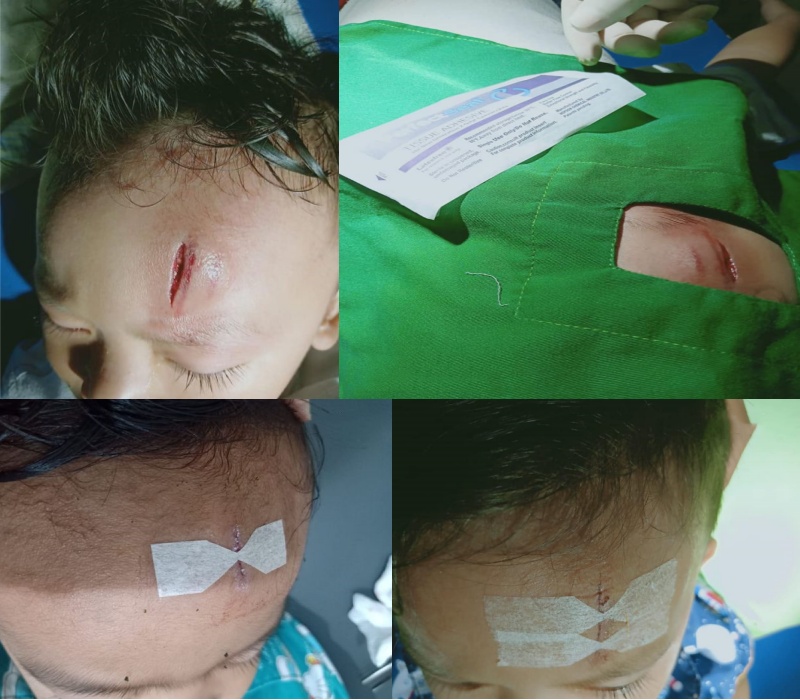
Q: Can it replace stitches entirely?
A: For low-tension wounds, yes. High-tension areas (e.g., joints) may still require sutures.
Q: How do I apply surgical skin glue?
A: Clean and dry the wound, approximate edges, and apply a thin layer. Hold edges together for 30 seconds.
Q: Is post-application care needed?
A: Avoid soaking, scrubbing, or applying ointments. Keep the area dry for 24 hours.
Q: How to store unused surgical glue?
A: Store at 15–25°C. Avoid freezing. Discard if expired or if the vial is damaged.
Q: What if glue accidentally contacts the eyes?
A: Rinse immediately with water and seek medical help. Do not force eyelids open.
Q: Will it leave residue or scars?
A: No residue after natural shedding. It may reduce scarring compared to sutures.
Q: Is it reimbursed by insurance?
A: Coverage varies by region. Many insurers reimburse it as a cost-effective alternative to sutures.
Q: What differentiates your product from competitors?
A: Faster curing time and lower allergy rates.
Q: Can I request custom packaging?
A: Yes. We offer OEM services for vial sizes, multi-packs, adhesive formulation, or sterile single-use kits.

